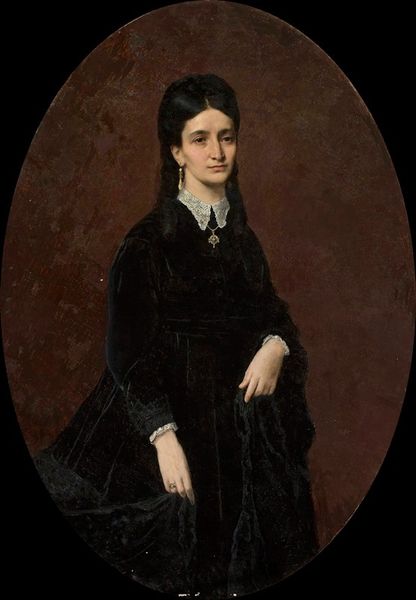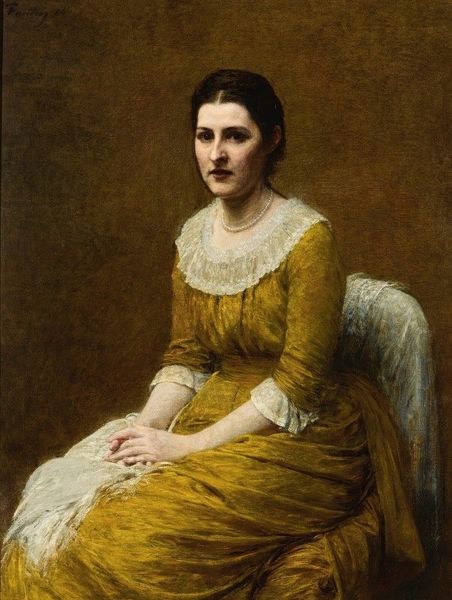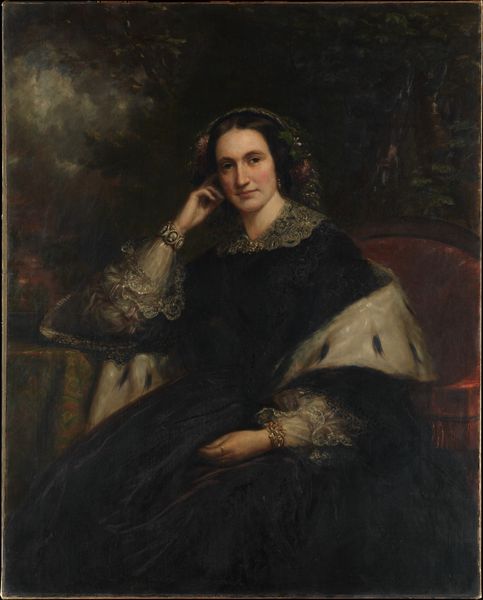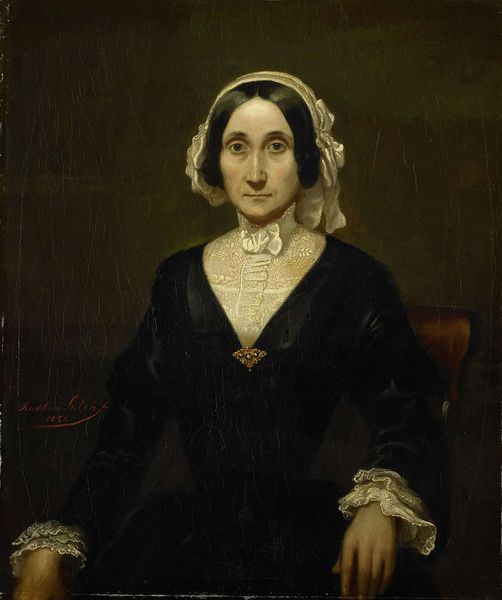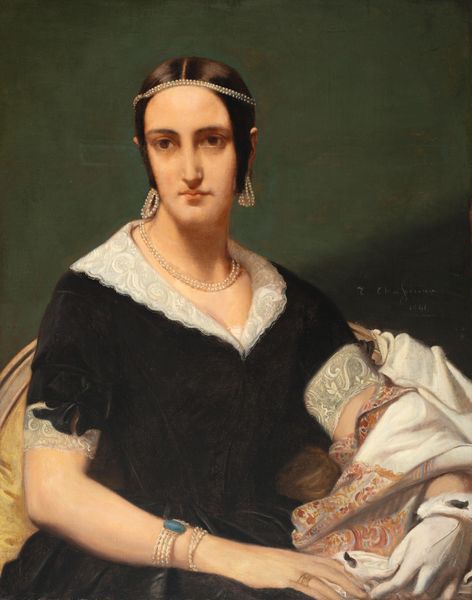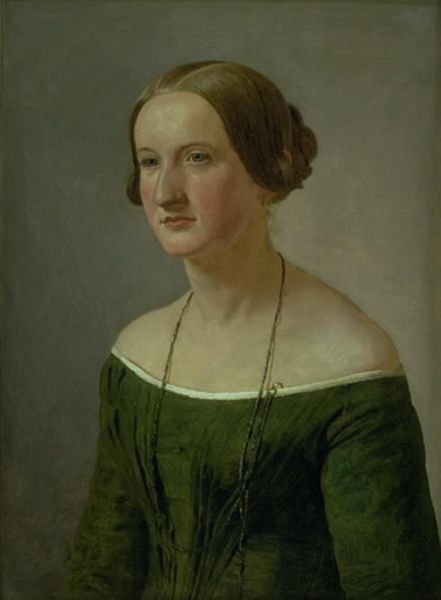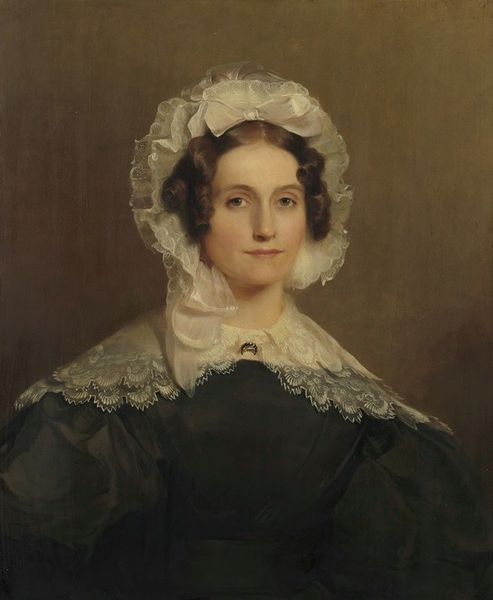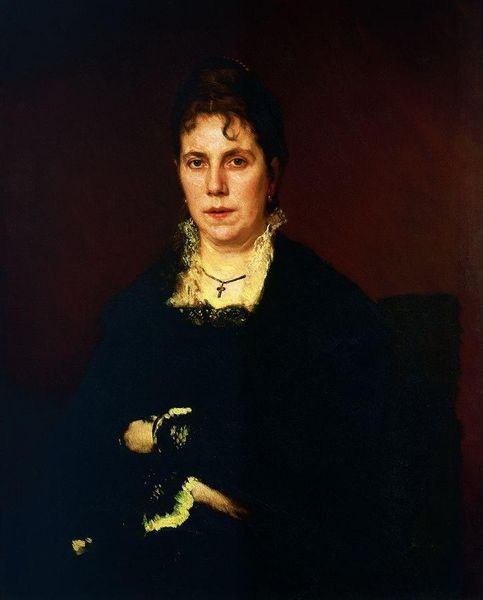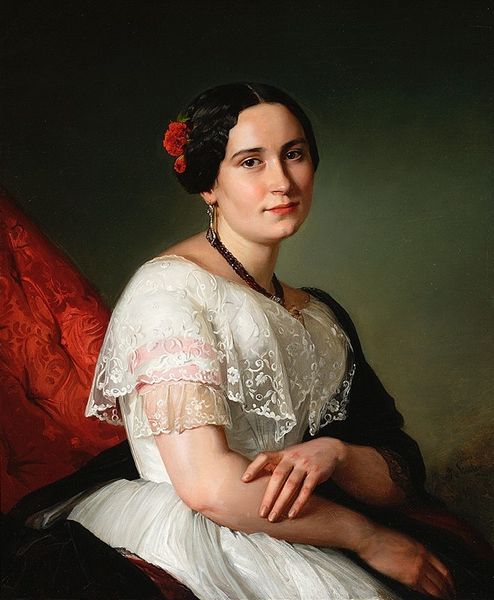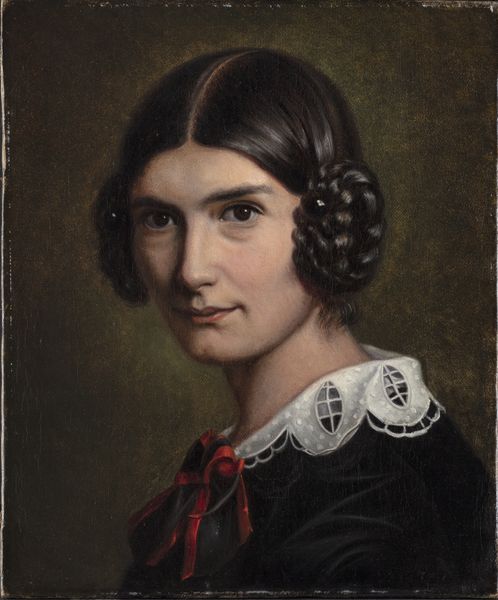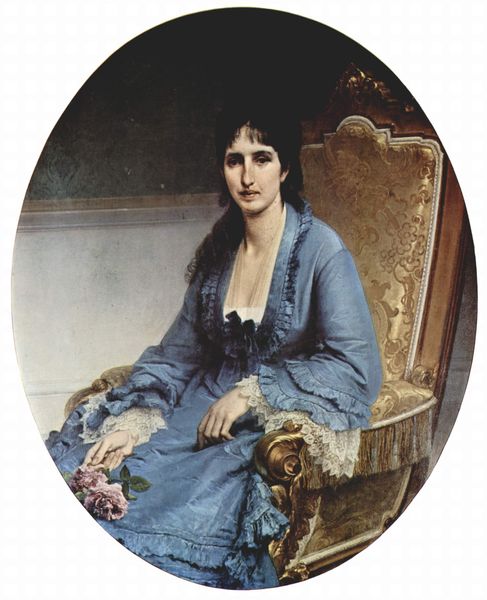
Portrait of Giuseppina Negroni Prati Morosini 1853
0:00
0:00
Dimensions: 122 x 96 cm
Copyright: Public domain
Curator: Standing before us is Francesco Hayez's 1853 portrait of Giuseppina Negroni Prati Morosini. The work, oil on canvas, currently resides in the Biblioteca Ambrosiana in Milan. Editor: My first impression is one of reserve and composure. There's a distinct somberness conveyed by the muted palette, dominated by blacks and browns, yet punctuated by that incredibly delicate lace. Curator: Indeed. The subdued color scheme and rather rigid posture aligns with the Neoclassical revivals fashionable at the time and further romanticized by Hayez, a master of Romanticism who wove Risorgimento ideals into his artwork, subtly pushing patriotic sentiments that are not easily evident at first glance. This portrait speaks to the social decorum of the period and reflects on the high social status of Giuseppina. Editor: That’s very interesting. It strikes me, too, how the book in her hands functions as both a prop and a symbol. Is it intended to convey intellectualism, perhaps? Or female empowerment? Curator: I suspect it signifies both, as Giuseppina was an intellectual figure involved in philanthropic and political movements of the time, even being honored for her support of the Italian soldiers by Queen Margherita after her passing. The book is a silent emblem, perhaps alluding to both her private thoughts and public engagements. It's a symbol laden with layers, from knowledge and reflection, to engagement in intellectual and political life. Editor: Her attire certainly reflects her standing, too, but I’m drawn to the lace – a common element in such portraits. Lace symbolizes not only luxury but also a high level of craftsmanship, patience and artistry – values that the sitter likely also wanted to reflect in her character. It also softens what might have been an austere image. Curator: The social role of these kinds of commissioned portraits shouldn't be underestimated. Beyond aesthetics, it served the purpose of projecting a carefully curated image of respectability and class consciousness during a time of intense socio-political change and shifting identities. In Northern Italy especially, nationalism and identity politics were extremely significant cultural influences on the upper classes. Editor: So, more than just an individual likeness, it is an emblem of status and of nationalistic pride? Fascinating how much the iconography can reveal. Curator: Precisely. Art so often captures both the individual and the era that created it. Editor: It leaves me contemplating how much control the subject had over their depiction, versus the artistic or even societal constraints imposed. Food for thought.
Comments
No comments
Be the first to comment and join the conversation on the ultimate creative platform.
